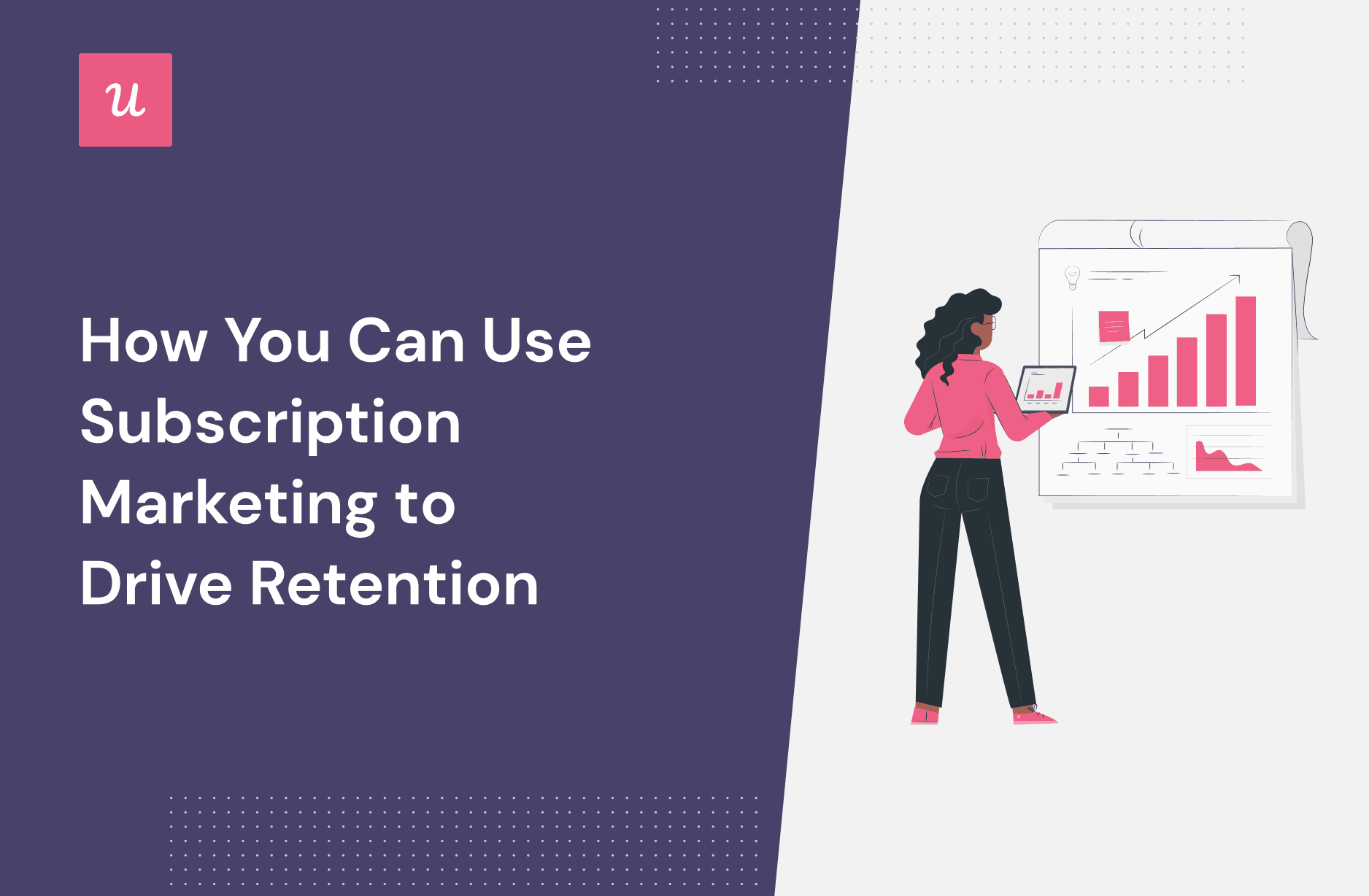
How can you use the right subscription marketing tactics to drive retention and improve your customer relationships?
In this article, we’ll cover:
- Types of subscription business models a subscription marketer can use.
- How a subscription-based business model impacts your marketing strategy.
- Common challenges in subscription marketing and how to overcome them.
- The best examples of subscription services and their business models.
- Our top subscription-based marketing tactics for sustainable growth.
Let’s get started.
Try Userpilot Now
See Why 1,000+ Teams Choose Userpilot

What is subscription marketing?
Similar to traditional marketing strategies, subscription marketing aims to attract long-term customers who will purchase a subscription and continue renewing it.
Subscription marketing business model types
There are five types of subscription marketing businesses can use:
- The fixed-usage subscription model
You can assemble a simple subscription service by offering a single type of plan with fixed pricing and usage limits.
This model is best for companies with a predictable, static customer base and straightforward offerings.
- Unlimited usage subscription
This subscription business model is centered around unlimited usage for a fixed price. Subscribers pay a monthly or yearly fee and can use the product or service as many times as they want.
- Per-user subscription model
Popular in the SaaS space, the per-user subscription model is where costs for subscription services are determined by how many people are using the account. Charges are based on the number of “seats”.
- Pay-as-you-go-subscription
With pay-as-you-go models, customers pay based on how much they use your service, rather than charging per user or feature.
- Freemium model
With freemium models, customers can access a free, limited version of the product or service for an unlimited time. If they want to enhance their experience with premium features or higher usage rates, they can upgrade to a paid plan.
Many popular SaaS companies have a tiered pricing model that includes free and paid plans.
How can a subscription model influence your marketing strategy?
Subscription models let businesses secure repeat customers. It ensures a steady, recurring revenue stream with a high lifetime customer value.
Subscription-based businesses can enhance their products and services to match customers’ needs and grow with them over time.
Here are three marketing strategies that subscription companies can use to attract customers.
Improve customer retention with loyalty programs
Customer loyalty programs drive customer engagement. They reward existing customers for their devotion, increasing their satisfaction even more.
These programs can be referrals, points-based, or mission-driven. Either way, they reward an existing customer for referring new customers to the business.
Here’s an example of a referral loyalty program from Dropbox. They reward customers with free cloud storage space as a thank-you for referring new customers.
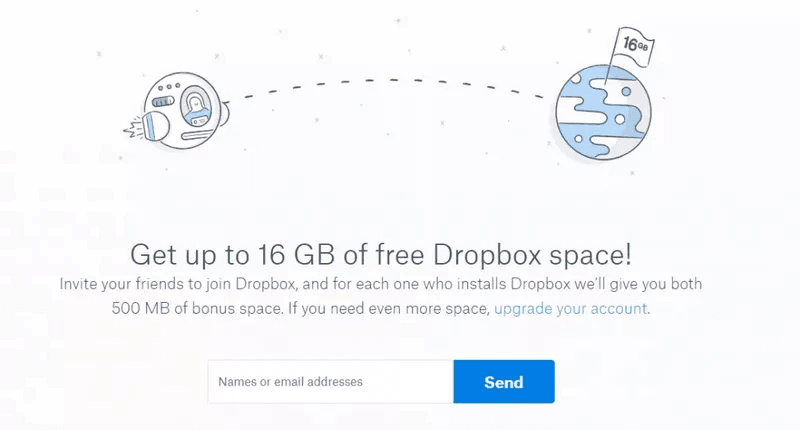
Use the product or service as the main driver of acquisition
Product-led growth (PLG) marketing is gaining speed as more and more subscription-based services are adopting this strategy.
With PLG, you’re using the product itself to attract customers. When potential customers get to “try before they buy”, they can see the product’s value themselves before financially committing to it.
The key to a successful PLG marketing program is to show your product’s value at every point of the customer journey.
For example, Airtable gives new customers a peak into the Pro plan with a free 14-day trial. That way, they can experience the full value of those premium features before they decide to buy. This a great way to gain new subscription customers in an age where building trust comes first.
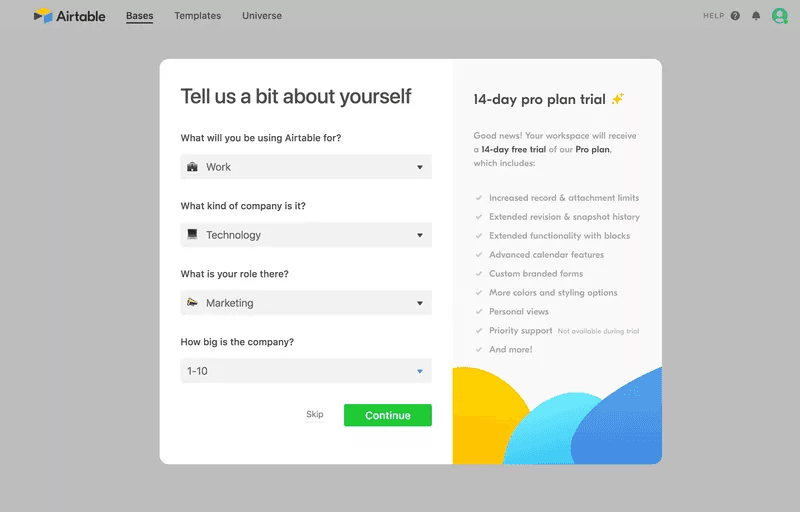
Increase customer lifetime value with contextual upsells
Take the pressure off – you don’t have to try to sell your most expensive plan right away.
It’s easier to start with a freemium plan, show value, then upsell to the product-qualified leads (PQLs). These are the people who’ve tried out your product already, experienced value, and are the prime candidates for up-sells.
Account expansion through up-selling or cross-selling is one of the easiest ways to boost customer lifetime value.
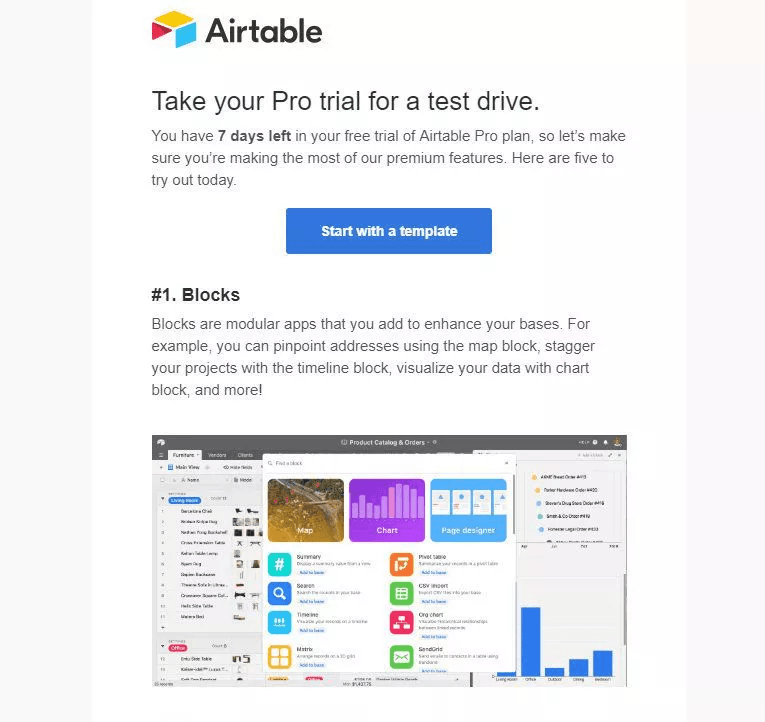
What are the challenges when building a subscription marketing strategy for subscription businesses?
Building a subscription marketing strategy comes with its own set of challenges, just like with any other marketing strategy in any industry.
The following are some challenges you may face and solutions to overcome them.
Creating the right pricing strategy
Pricing can be hard to get right. If you price too high, or too low, or you give away too many discounts, you might run into revenue issues down the line.
For example, giving a discounted price can be great for short-term customer acquisition, but the people you’re bringing in are less likely to become repeat customers – an essential for sustainable growth.
There’s no one-size-fits-all answer for how to price your subscription business. It’s a matter of trial and error, analyzing your analytics and finding the sweet spot that optimizes gaining new subscribers while retaining them.
Retaining the existing customer base
It’s challenging to retain existing customers, but retention is more cost-effective than acquisition. It should be a top priority.
The key to customer loyalty and retention is to always provide value every step of the way, even long after someone’s signed up.
You can use segmentation to offer personalized in-app experiences and support to specific user groups. Your existing customers will remain loyal if you guide them on how to continue achieving meaningful value.
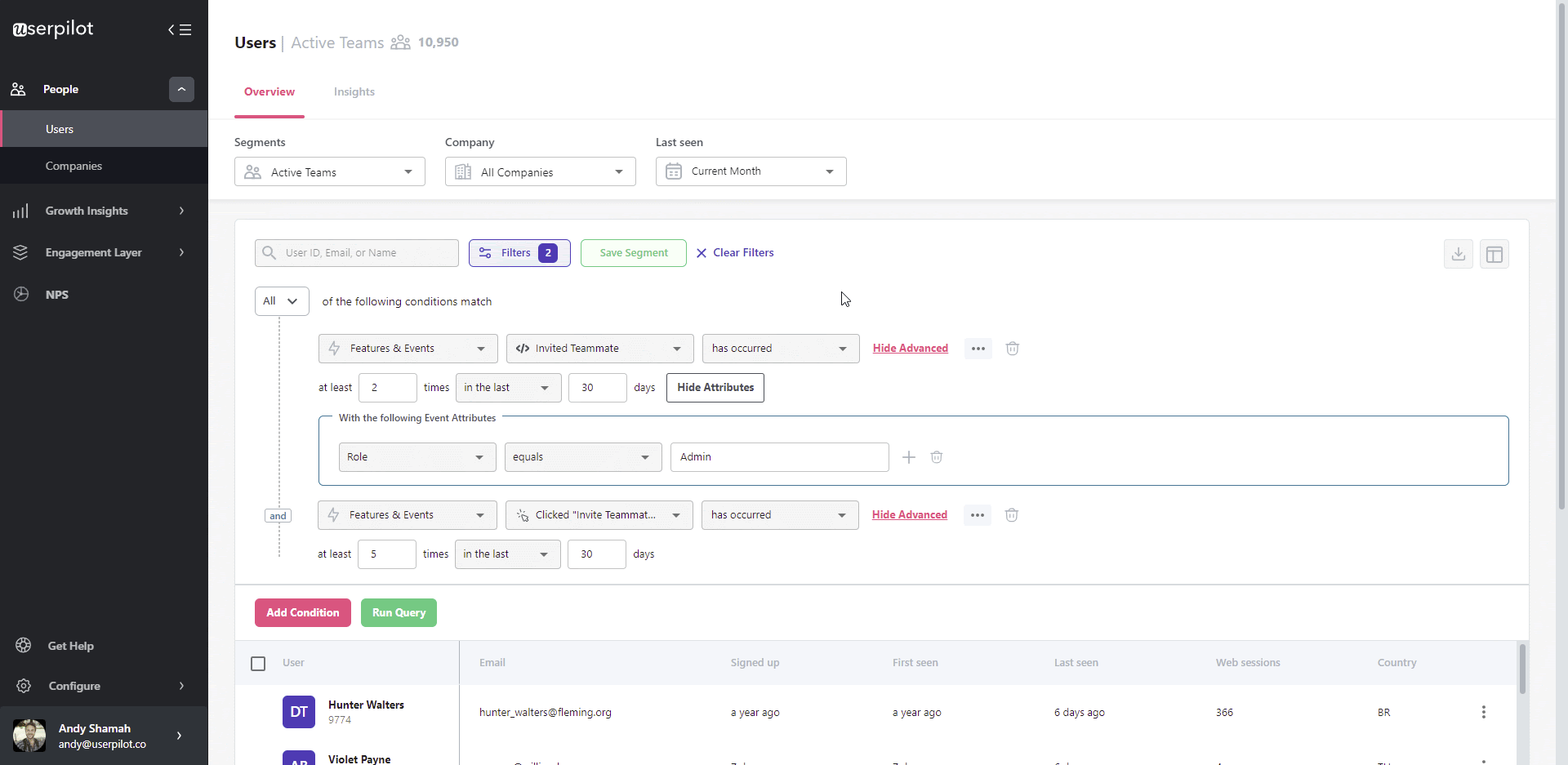
Involuntary churn
Involuntary churn happens when a customer’s subscription gets canceled, mostly due to payment processing issues.
The good news is that many cases of involuntary churn are salvageable. The first step is to notify people about the payment failure via email or in-app message.
You can prevent involuntary churn by proactively reminding people to update any expired credit cards and renew their subscriptions before they lapse.

The best examples of subscription business models
Among subscription business benefits, we can name better cash flow management, enhanced marketing opportunities, and incredible scalability for growth.
No wonder some of the fastest-growing companies have a subscription-based business model.
Here are three examples of companies using subscription businesses with an overview of their subscription offering.
Free trials and freemium plans are great for simple SaaS products, but companies with complex features should consider adding a product demo as well.
Here at Userpilot, we offer free trials with an added demo from our team since we have a feature-rich product that solves complex issues.
It can take a minute to get set up and experience value, so we want to set our new customers up with helpful resources from the start.
Userpilot

Slack
Slack is another subscription-based tool that uses a freemium pricing strategy. Users can sign up for the free plan and use that indefinitely.
If they want to use premium features, like unlimited messaging or Slack Connect, customers have to upgrade to a paid account.
Slack also gives a glimpse into its entire premium functionality with free trials, where new customers can experience paid plans firsthand for a limited time.
As for how they price their paid plans, Slack uses the “pay-per-use” pricing strategy, where they charge per active user in a Slack workspace.
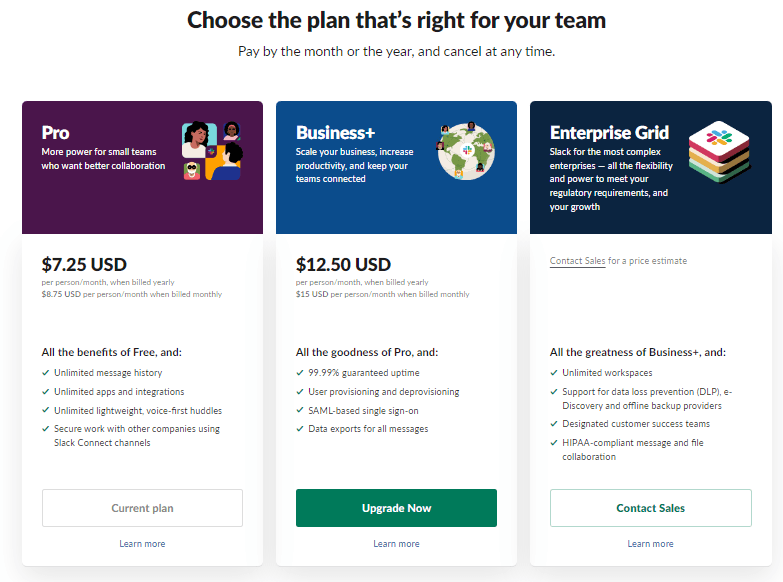
Adobe
Adobe has a whole suite of digital products for sale in its Creative Cloud. Their subscriptions can be purchased either individually or all-in.
Some SaaS companies will price their products individually because their value differs a lot. In Adobe’s case, Photoshop is much cheaper than Acrobat Pro because the perceived value of Photoshop is higher.
That being said, customers can choose to buy an unlimited subscription to Creative Cloud with access to all of the apps in their suite.
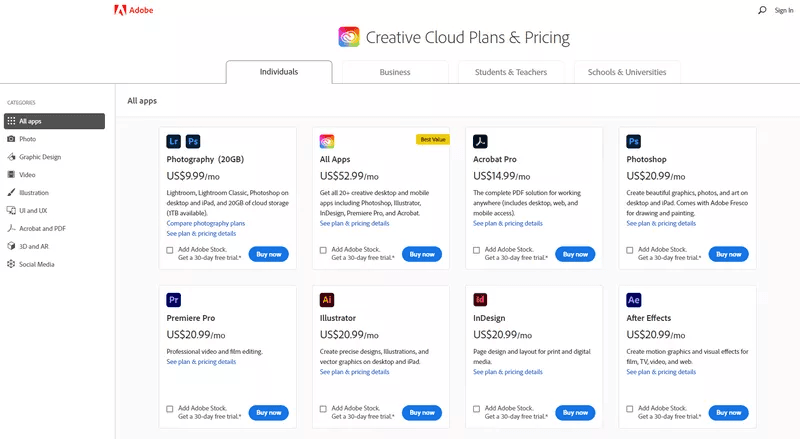
Subscription marketing tactics to implement for a successful strategy
Try out these subscription marketing strategies to get more recurring purchases and long-term customers.
Choose the right pricing strategy
Choosing the right pricing strategy can be a challenge, but when done right, it leads to sustainable growth and better customer retention.
To choose the right pricing strategy, you need to know your users and how your product delivers value. From there, you can pick the right business model.
Your product value is how well your app helps customers achieve their goals compared to your competitors.
To start analyzing product value, use the PMF Survey (build one with Userpilot) to understand how your users feel about your product offering.
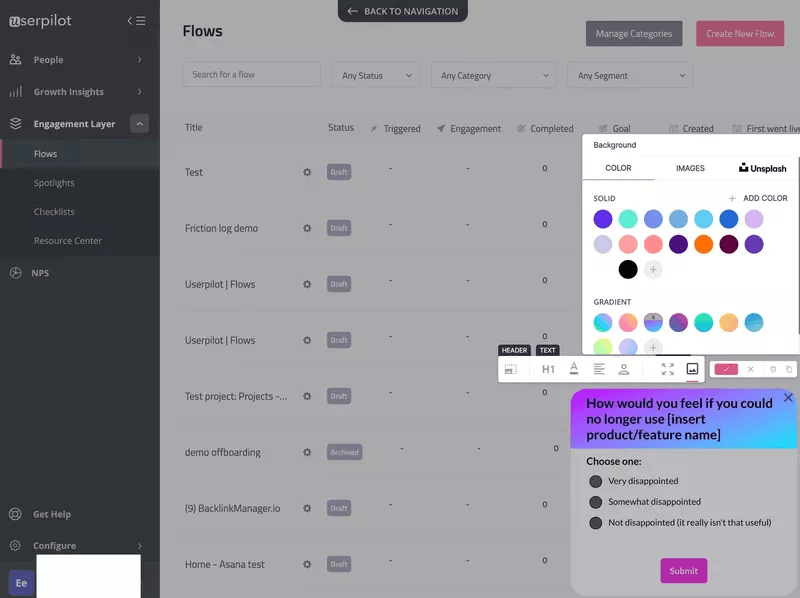
If over 40% of people are saying they would be “very disappointed” if they could no longer use your product, you have achieved product-market fit and can start optimizing your pricing.
Collect data about your customers from the beginning
If you want to make product updates that matter to users and lead to revenue growth, you must optimize the entire product experience so that it’s frictionless and valuable every step of the way.
The first step to making any product improvements is to understand what goals your customers want to achieve with your product. To get this information, you can collect customer data within your welcome page using a microsurvey.
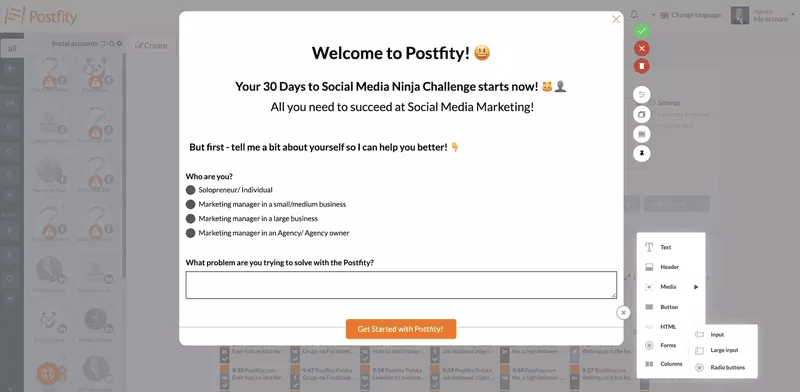
Keep it concise with 1-2 questions, like in this example from Postfity’s welcome survey.
Create a personalized experience to boost retention
Consumers today expect highly-personalized product experiences that give them useful tips and guidance on how to achieve their goals.
A one-size-fits-all approach to product guidance doesn’t cut it anymore.
Track product usage and in-app behavior and build micro-user segments with Userpilot.
Then build personalized experiences for each segment to drive them to experience value faster.
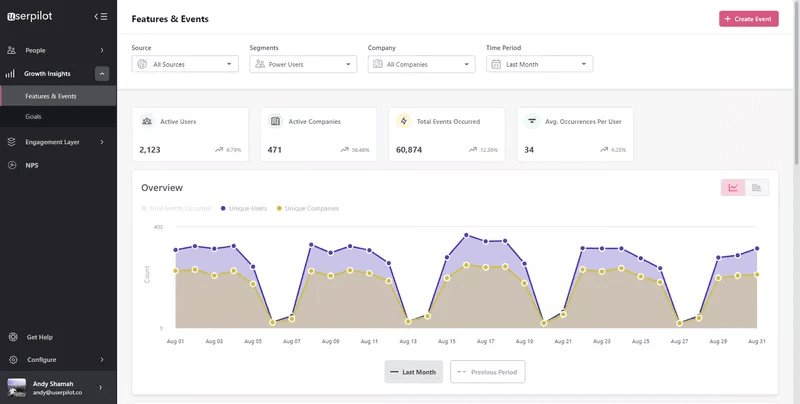
And now, with Userpilot’s new mobile capabilities, you can also onboard and engage mobile app users by creating personalized messaging, push notifications, and surveys.
Boost adoption with gamification
Gamification can be a powerful driver for product adoption.
Users are motivated by their success, so celebrate milestones with badges, leaderboards, scores, points, or other rewards.
For new customers who haven’t achieved success just yet, motivate them to keep going during onboarding with elements like progress bars and checklists. Seeing progress is psychologically rewarding and helps to boost product adoption.
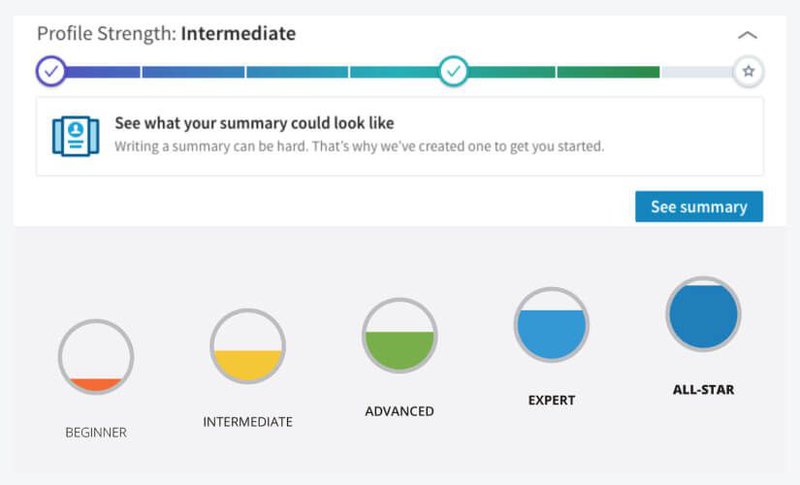
Identify upsell opportunities and encourage account expansion
Upselling is helpful for both your customers and your revenue growth. Your customers can elevate their experience even more with premium product features that help them achieve their goals.
For you, account expansions increase lifetime customer value.
You can encourage account expansions for those customers who are currently maxing out the potential for their current plan and are ready to grow.
Userpilot enables you to use event triggering to trigger an upsell prompt at the right time.
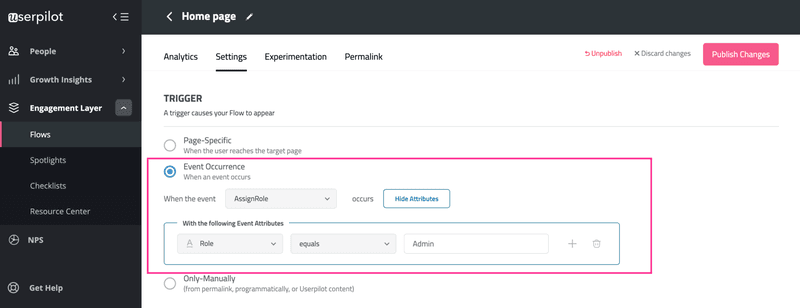
Conclusion
A great subscription marketing strategy is the driving force for more recurring revenue and better customer retention. By nailing your pricing strategy, attracting the right customers, and building better product experiences that delight your users, you’re setting your subscription business up for success.
Want to build product experiences code-free? Book a demo call with our team and get started!





